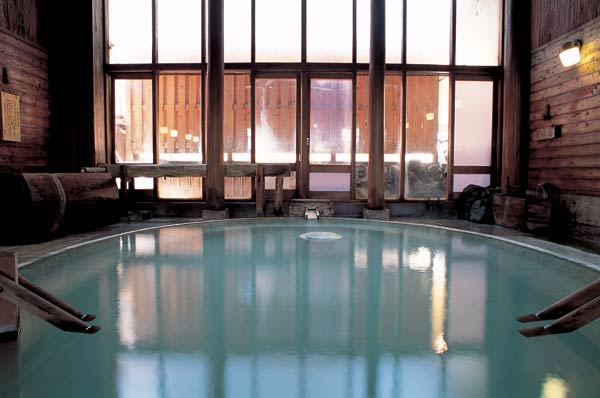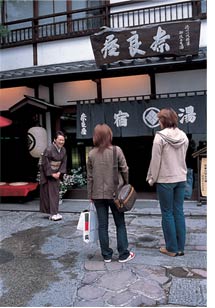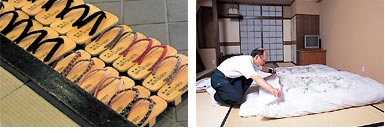 |
|
NIPPONIA No.26 September 15, 2003
|
|
Special Feature*

The large bath at Nara-ya Ryokan is round and made of stone. The inn also has a hot outdoor pool and another pool for individual families. The water has a cloudy white appearance and high sulfur content. It is said to be effective in treating many ailments.

Today, it is common to stay only one night at a hot spring, but years ago people often spent many days there, for the therapeutic benefits. Such a stay is called toji ("cure using hot mineral water").Toji regimes were measured in units of time — hito-mawari ("one cycle") was therapeutic bathing for one week and futa-mawari for two weeks, while a longer three-week stay was called mi-mawari. Shorter stays became common throughout Japan around the 18th century. When travelers began staying for as little as one night, coming not for a cure but simply for enjoyment, the new word coined for such a stay was ichi-ya toji. (Ichi-ya means "one night,"and the word toji in this case does not imply a cure.) The generally accepted pattern now, a stay for one night and part of two days, comes from that custom.

 |

Left: The landlady (left of photo) is the inn's most visible staff member. No matter how busy she is, she finds time to bid her guests farewell and thank them for coming.
Center: Geta clogs arranged at the entrance add to the atmosphere of a hot spring ryokan.
Right: The guests' futons are laid out in the evening. The staff generally waits until guests are out of the room, taking a stroll or soaking in the bath.
|
|
 |